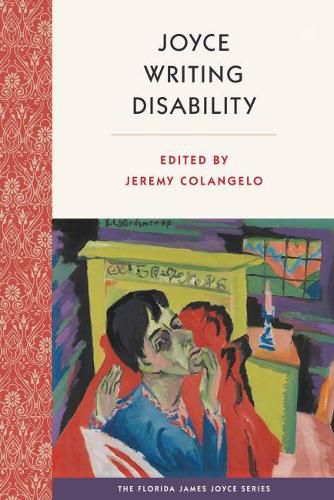Readings Newsletter
Become a Readings Member to make your shopping experience even easier.
Sign in or sign up for free!
You’re not far away from qualifying for FREE standard shipping within Australia
You’ve qualified for FREE standard shipping within Australia
The cart is loading…






This title is printed to order. This book may have been self-published. If so, we cannot guarantee the quality of the content. In the main most books will have gone through the editing process however some may not. We therefore suggest that you be aware of this before ordering this book. If in doubt check either the author or publisher’s details as we are unable to accept any returns unless they are faulty. Please contact us if you have any questions.
In this book, the first to explore the role of disability in the writings of James Joyce, contributors approach the subject both on a figurative level, as a symbol or metaphor in Joyce’s work, and also as a physical reality for many of Joyce’s characters. Contributors examine the varying ways in which Joyce’s texts represent disability and the environmental conditions of his time that stigmatized, isolated, and othered individuals with disabilities.
The collection demonstrates the centrality of the body and embodiment in Joyce’s writings, from Dubliners and A Portrait of the Artist as a Young Man to Ulysses and Finnegans Wake. Essays address Joyce’s engagement with paralysis, masculinity, childhood violence, trauma, disorderly eating, blindness, nineteenth-century theories of degeneration, and the concept of madness.
Together, the essays offer examples of Joyce’s interest in the complexities of human existence and in challenging assumptions about bodily and mental norms. Complete with an introduction that summarizes key disability studies concepts and the current state of research on the subject in Joyce studies, this volume is a valuable resource for disability scholars interested in modernist literature and an ideal starting point for any Joycean new to the study of disability.
$9.00 standard shipping within Australia
FREE standard shipping within Australia for orders over $100.00
Express & International shipping calculated at checkout
This title is printed to order. This book may have been self-published. If so, we cannot guarantee the quality of the content. In the main most books will have gone through the editing process however some may not. We therefore suggest that you be aware of this before ordering this book. If in doubt check either the author or publisher’s details as we are unable to accept any returns unless they are faulty. Please contact us if you have any questions.
In this book, the first to explore the role of disability in the writings of James Joyce, contributors approach the subject both on a figurative level, as a symbol or metaphor in Joyce’s work, and also as a physical reality for many of Joyce’s characters. Contributors examine the varying ways in which Joyce’s texts represent disability and the environmental conditions of his time that stigmatized, isolated, and othered individuals with disabilities.
The collection demonstrates the centrality of the body and embodiment in Joyce’s writings, from Dubliners and A Portrait of the Artist as a Young Man to Ulysses and Finnegans Wake. Essays address Joyce’s engagement with paralysis, masculinity, childhood violence, trauma, disorderly eating, blindness, nineteenth-century theories of degeneration, and the concept of madness.
Together, the essays offer examples of Joyce’s interest in the complexities of human existence and in challenging assumptions about bodily and mental norms. Complete with an introduction that summarizes key disability studies concepts and the current state of research on the subject in Joyce studies, this volume is a valuable resource for disability scholars interested in modernist literature and an ideal starting point for any Joycean new to the study of disability.